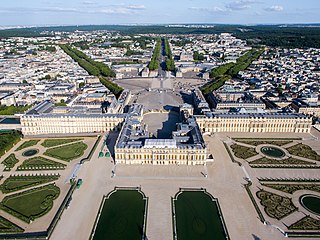
A château is a manor house or residence of the lord of the manor, or a fine country house of nobility or gentry, with or without fortifications, originally, and still most frequently, in French-speaking regions.
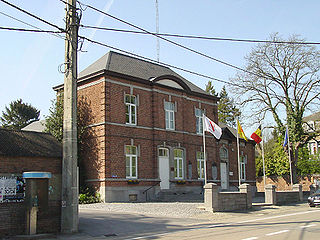
Tinlot is a municipality of Wallonia located in the province of Liège, Belgium.

La Roche-Guyon is a commune in the Val-d'Oise department in Île-de-France in northern France. It is located in the Vexin regional nature park.
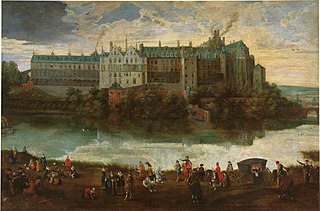
The Palace of Coudenberg was a royal residence situated on the Coudenberg or Koudenberg, a small hill in what is today the Royal Quarter of Brussels, Belgium.

Antoing Castle is one of Belgium's most original and well-known castles, situated in Antoing in Hainaut, Wallonia.

Mirwart Castle is situated in Mirwart in Saint-Hubert, in the province of Luxembourg, Wallonia, Belgium.

Jehay Castle or Jehay-Bodegnée Castle is a castle situated in the municipality of Amay in Liège Province, Wallonia, Belgium.
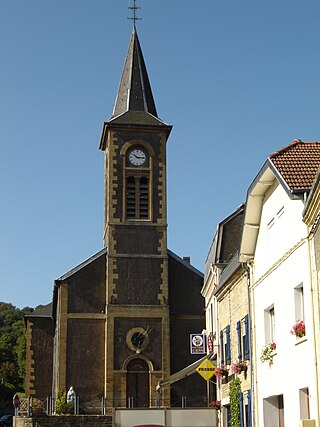
Gorcy is a commune, located in the department of Meurthe-et-Moselle and the Grand Est region, France. This village on the north of the Meurthe-et-Moselle is next to the Belgian frontier, and about 10 km from Longwy, main city of the "Pays-Haut".

The Castle of Thy-le-Chateau is a medieval castle located in Thy-le-Château, Walcourt in the Province of Namur in Belgium. Originally built in the 12th century, it served as the military fortress for several noble clans until the French Revolution, when it fell into disrepair. The castle was successfully restored in 1939.

The Four Sons of Aymon, sometimes also referred to as Renaud de Montauban is a medieval tale spun around the four sons of Duke Aymon: the knight Renaud de Montauban, his brothers Guichard, Allard and Richardet, their magical horse Bayard, their adventures and revolt against the emperor Charlemagne. The story had a European success and echoes of the story are still found today in certain folklore traditions.
Cartier Castle is a château in Marchienne-au-Pont, a district of Charleroi, in the province of Hainaut, Wallonia, Belgium.
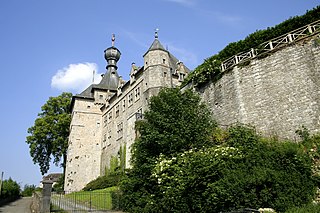
Chimay Castle is a château in Chimay, Hainaut, Wallonia, Belgium. The castle has been owned by the Prince of Chimay and his ancestors for centuries, and it is open to the public for tours during part of the year. Although the castle was significantly damaged by a fire in 1935, the structure was subsequently rebuilt, and renovations continue under the current generation of the princely family.

Écaussinnes-Lalaing Castle is a castle in the village of Écaussinnes-Lalaing in the municipality of Écaussinnes in the province of Hainaut, Wallonia, Belgium.

Fontaine-l'Évêque Castle is a castle in Fontaine-l'Évêque, province of Hainaut, Wallonia, Belgium.

Val-Saint-Lambert Abbey was a Cistercian abbey in the Prince-Bishopric of Liège. It is situated in Wallonia in the city of Seraing on the right bank of the Meuse, in Belgium, about 13 kilometres (8.1 mi) southwest of Liege. Founded in 1202, the abbey's monks were expelled during the French Revolution. In the 19th century, the building ruins were converted into the Val Saint Lambert crystal factory. The structure is considered to be an important example of Cistercian architecture.

The Florennes Castle in Florennes, Namur, Wallonia, Belgium, is a castle that dates back to the 9th century, although the most of the modern structure is much more recent.

The Château de Fontaine is a chateau in the municipality of Onhaye, Wallonia in the Belgian province of Namur. It is located south of the village of Anthée.

The Palace of the Count of Flanders is a neoclassical palace in Brussels, Belgium. It was originally built between 1776 and 1781 for Countess Brigitte of Tirimont-Templeuve, though it was heavily expanded in the 19th century. Today, it houses the Court of Audit of Belgium.






















